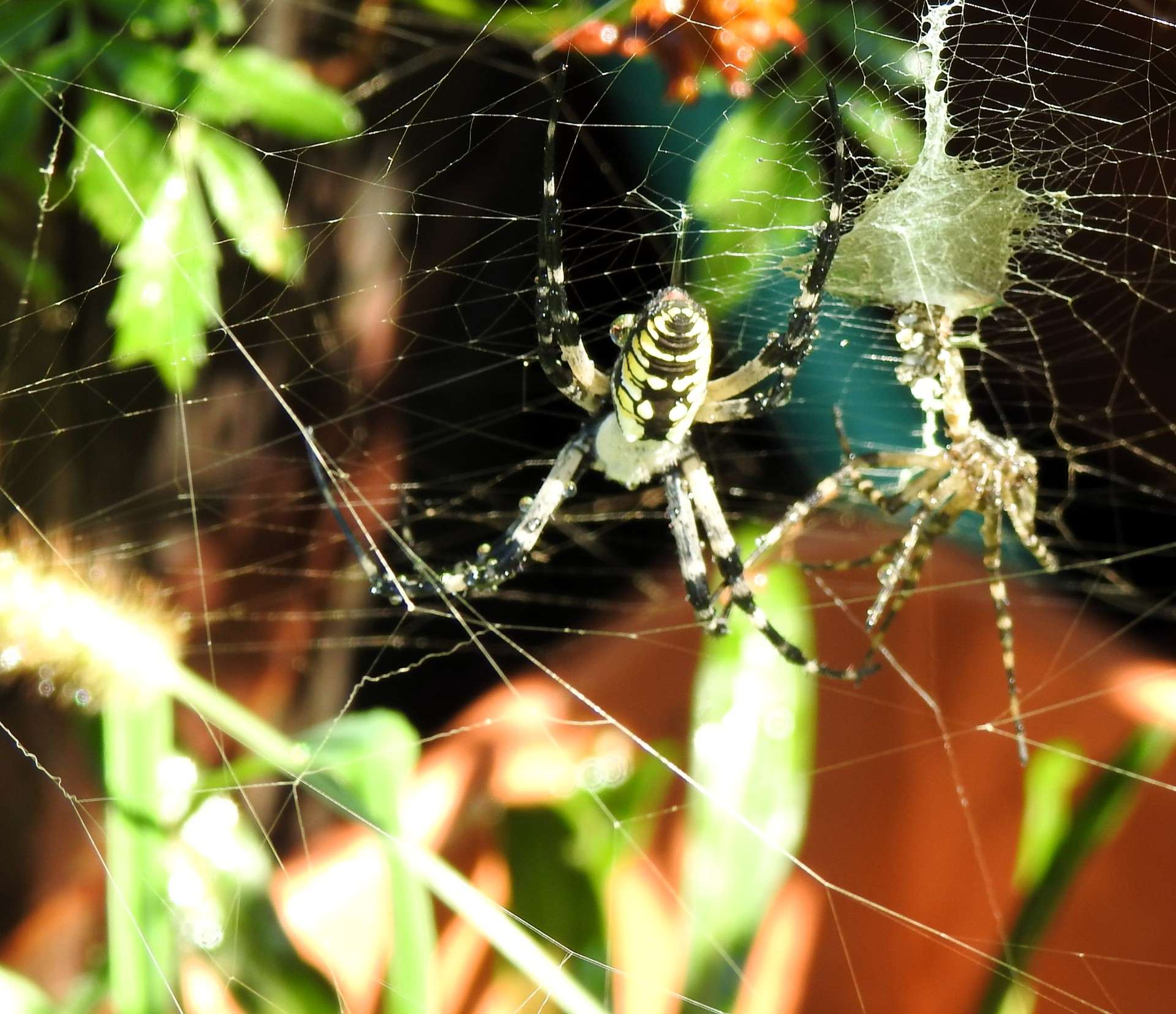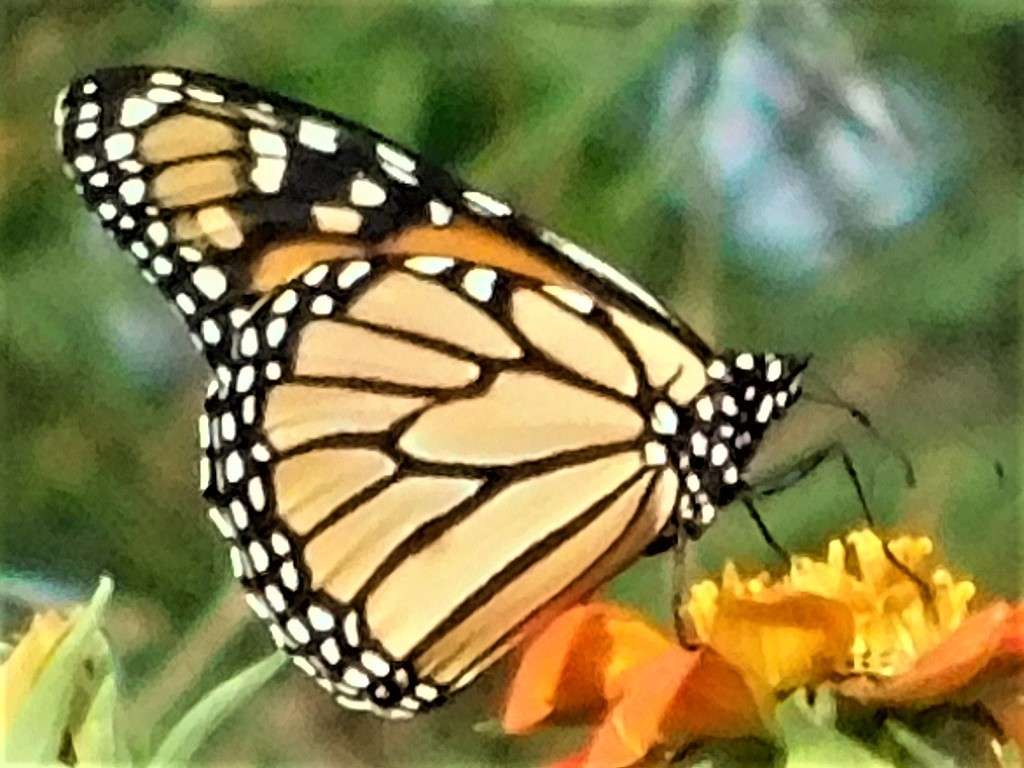
By KAREN MADORIN
Last week I researched the relationship between milkweed and Monarch butterflies and felt comfortable saying that plant makes those orange-winged wonders toxic to predators. While true in many cases, I discovered in my own flower bed that some common garden critters devour those fluttering visitors without ill effect. For example, Charlotte, our resident yellow orb garden spider devoured one within a couple days after trapping it in her giant web and still lives.
Some of my friends can’t talk about spiders let alone enjoy watching them, but this variety of garden spider is a a garden good guy. Along with jumping spiders, they make friendly, non-venomous neighbors with entertaining antics. As a bonus, orb weavers eat insects like grasshoppers that I don’t want gnawing holes in leaves, tomatoes, and other produce. In fact, this one established her expansive web in a grasshopper-rich section of our flower bed. We watched several incidents over the summer where she’d capture a bristly-legged destruction machine, wrap it in silk, and then leisurely dine al fresco.
As moon phases repeated, Charlotte’s web changed, I researched this species and learned they recycle webs. When the silk fibers thin and weaken, these dramatic hour glass-shaped female yellow and black, long-legged arachnids eat old silk and recycle its protein into a new one. An identifying marker of its trap is a zig-zag patch somewhere near mid-section, which researchers suggest adds strength for catching large prey like grasshoppers and big butterflies. True to form, our girl’s webs incorporated that signature design.

Depending on food supply, Charlotte appears thin or plump. Her combined head and thorax were more than an inch-and-a-half long with even longer legs when I noticed her in June. She hasn’t grown noticeably bigger so the insects she eats simply sustain her. At one time, I thought a much smaller, plain-clothed male orb weaver visited and left her producing an egg sac, but, thankfully, baby spiders never emerged. Hordes of them might have altered my opinion about sharing space.
All this said, Charlotte caused distress several days ago. We love watching migrating monarchs in September and October. Some years, scores stop by, but this year has been slow. Six visiting at a time constitutes a good day. Apparently, one decided to sample nasturtiums near our orb weaver’s silken strands. Like grasshoppers and moths entrapped earlier, this transient wonder entangled itself in that complex netting.
By the time I found the monarch, Charlotte had encased it in silken fiber and was dining at her convenience. So what about those orange wings and milkweed-induced toxins? Was my pretty spider dying? Off to the keyboard to see what wisdom entomologists might impart. Apparently, these spiders safely consume monarchs either by eating around concentrated glycosides or by processing them without ill-effect. I searched for uneaten orange wings but saw none discarded amongst the dense greenery surrounding Charlotte’s web.
While I hope to send every monarch that visits our flowers safely to Mexican highlands to over-winter, I can’t blame Charlotte for harvesting the equivalent of a Thanksgiving turkey dinner. After all, a girl’s gotta protect her figure.
Karen Madorin is a retired teacher, writer, photographer, outdoors lover, and sixth-generation Kansan.






